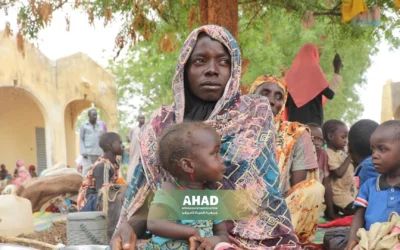Problems of water shortage in Kenya
Kenya, like many other countries in the world, faces significant challenges in terms of water shortages. This problem is due to a combination of environmental, social and economic factors that overlap to make access to clean water a major challenge for a large part of the population. Water shortage is one of the most pressing issues in Kenya, as it significantly affects the health of the population, agriculture, and the economy in general.
The main causes of water shortage in Kenya
Climatic changes:
Climate change is one of the most prominent causes of water shortages in Kenya. The marked increase in temperatures and changes in the precipitation pattern have caused prolonged droughts that affect natural water sources such as rivers and lakes. These extreme climatic conditions make it difficult for plants and animals to survive and reduce the amounts of water available for human use.
Population increase:
Rapid population growth in Kenya is leading to increased demand for water. This increasing pressure on limited water resources hinders the ability to provide adequate amounts of water to the population, especially in densely populated urban areas. Many individuals in rural areas rely on water from conventional wells that can dry up during frequent droughts.
Inefficient management of Water Resources:
Kenya suffers from poor management of Water Resources. This includes poor planning and lack of investments in water infrastructure, which leads to significant waste and pollution of water. Many rural and urban areas lack effective water distribution and management systems, which hinders easy access to clean water.
Pollution:
Pollution is a major factor leading to water shortages in Kenya. Industrial, agricultural and household waste pollute rivers and lakes, making it difficult to find clean and safe water for human use. Water pollution is a serious problem that affects public health and the natural environment.
Disputes over water resources:
Tribal and political conflicts disrupt access to water sources in some areas, causing destruction of water infrastructure and restricting access to it. These conflicts can exacerbate the water crisis in the affected areas and hinder efforts to improve water supply.
The lack of water in Kenya is a major challenge that affects the daily life of the population and the national economy. To solve this urgent problem, the government and the international community should strengthen investment in water infrastructure, improve water resources management, and promote awareness of the importance of water conservation. In addition, effective action must be taken to address climate change and pollution, and international cooperation and coordination must be strengthened to achieve sustainable water supply in Kenya.
Negative effects of water shortage
Public health:
The lack of Clean Water leads to the spread of waterborne diseases, such as cholera and typhoid. Many residents rely on unsafe water sources, which increases the risk of infectious diseases. In addition, it becomes difficult for the population to have access to clean water for personal use and cleaning, which leads to deterioration of Public Health and increased mortality from water-related diseases.
Agriculture and food security:
Agriculture forms the main economic activity in Kenya, and is highly dependent on the availability of water. The lack of Water leads to a deterioration in agricultural production, which negatively affects food security and the local economy. Poor families in rural areas are forced to reduce planting areas or choose crops with low water consumption, which leads to a lack of production and further food degradation.
Migration and displacement:
The lack of water drives many residents in rural areas to migrate towards cities in search of better water sources. This increases the pressure of internal migration and contributes to the aggravation of urban problems such as overpopulation and unemployment. The infrastructure of cities is negatively affected by an increase in the population, which leads to an increase in the costs of providing basic services such as water, sanitation and transport.
Water shortages in Kenya have catastrophic effects on public health, agriculture, and economic growth. In order to address this urgent problem, the government and the international community must strengthen investment in water infrastructure and improve water resources management. It also requires a focus on promoting awareness about water conservation and environmental sustainability, as well as strengthening efforts to combat climate change and pollution. Without effective solutions, the challenges related to water shortages in Kenya will worsen and will increase poverty and displacement in the country.

Proposed solutions to the problem of water shortage in Kenya
Improving water resources management:
Improving water resources management is one of the key solutions to address water shortages in Kenya. The Kenyan government should strengthen the management of water resources by developing effective policies and strictly applying them. This includes investing in water infrastructure such as dam construction, upgrading water distribution networks, and improving storage and distribution systems to ensure more sustainable and efficient water supply.
Awareness and education:
Education and awareness plays a vital role in changing people’s behaviors towards more effective and sustainable water use. Educational and informational programs can promote awareness of the importance of water conservation and teach residents techniques for optimal water use. Awareness campaigns can be organized to encourage rational use of water in homes and farms.
Use of technology:
Technology plays a huge role in solving the problem of water shortage in Kenya. Modern irrigation technologies such as drip irrigation and automatic irrigation can be used to reduce waste and increase the efficiency of water use in agriculture. In addition, water purification technologies can be used to improve the quality of water available for human use.
Regional and international cooperation:
Cooperation with neighboring countries and international organizations can help provide the necessary financial and technical resources to meet the challenges of water shortage in Kenya. Joint projects can enhance Kenya’s capacity to better manage its water resources, and promote knowledge and technology exchange between countries.
Kenya is facing significant challenges regarding water shortages, and these challenges require integrated efforts from the government and the international community. By improving the management of water resources, promoting awareness, and using modern technology, Kenya can overcome this problem and ensure a more sustainable and healthy future for its population. These measures are necessary to ensure the provision of clean and safe water to all, and to achieve sustainable development in the country.
In coordination with the international community and the private sector, tangible progress can be made in improving Kenya’s water supply and achieving sustainable development goals related to water and health.

AHAD: towards sustainable development in the heart of Africa
AHAD works in the heart of the African continent, especially in the countries of Central and West Africa, with the aim of improving the quality of life of the poor and disadvantaged through its multiple projects in the fields of health, education, water and economic development.
AHAD understands the unique nature of the communities it works with, and relies on strategies that enable it to benefit from the skills and abilities of individuals in those communities. By building on their capabilities and enhancing their participation, AHAD aims to achieve a positive impact that contributes to building strong and sustainable communities.
AHAD is based on the motto “because it’s worth living”, which is the main motive behind every project it implements. AHAD strives to make a positive impact on the lives of the communities in which it operates by:
– Provide basic needs such as clean water and sanitation.
– Improve the quality of education and provide better educational opportunities.
– Empowering individuals to participate effectively in economic and social life to build productive and sustainable societies.
AHAD seeks to achieve sustainable development through the implementation of projects that enhance community capacities and promote environmental sustainability. The main challenge is to address the environmental and economic challenges facing those communities, balancing daily needs and protecting natural resources to ensure a better future for future generations.
AHAD works with a deep commitment to improving the quality of life of individuals and communities in Africa, by strengthening capacities and empowering local communities. AHAD is looking forward to partnering with local and international governments and the private sector to achieve strategic goals and promote sustainability in the region.
You can visit the AHAD website to find out more about the projects it offers
ALSO READ
WHAT THE FOOD BASKET CONTAINS IN AHAD
Join us in our message




